MARIANI’S
Virtual Gourmet
January
15, 2016
NEWSLETTER
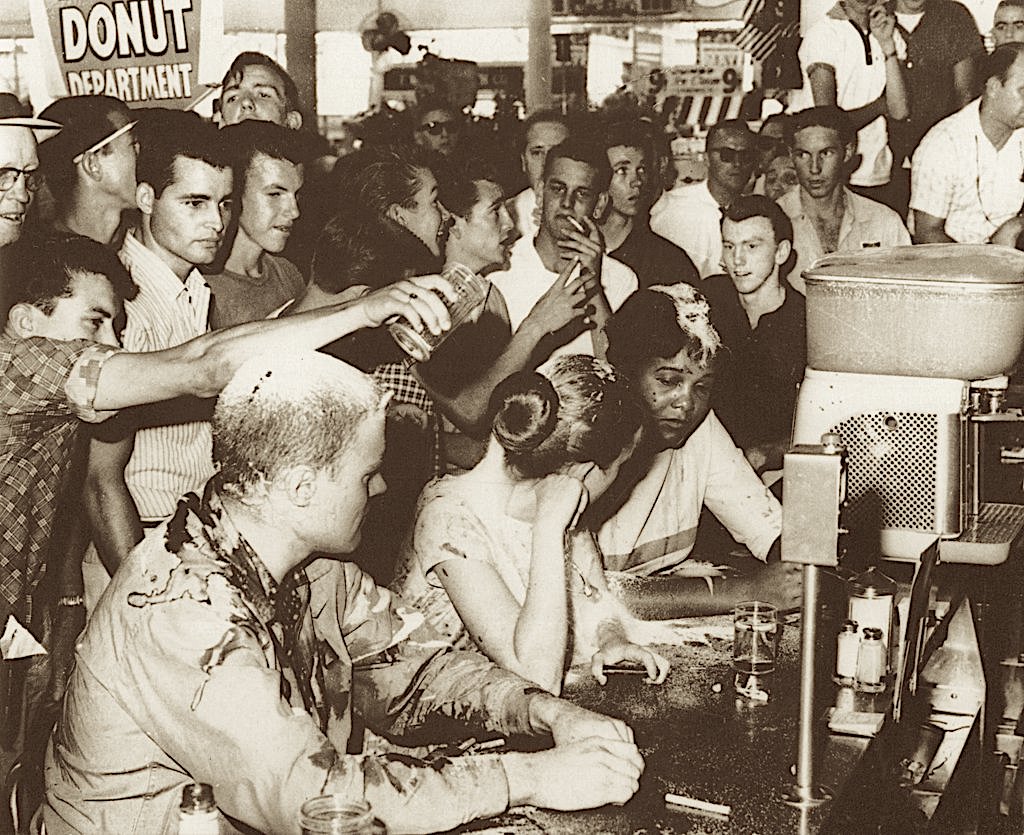
Sit-in at
Woolworth lunch counter in Jackson, Mississippi, 1963.
Photo by Fred Blackwell
HONOR
DR. MARTIN LUTHER KING, JR. DAY
IN THIS ISSUE
DINING AROUND BOSTON,
By John Mariani
NEW YORK CORNER
LOI ESTIATORIO
By John Mariani
NOTES FROM THE WINE CELLAR
GOING FOR THE LIQUID GOLD:
A MADEIRA PRIMER
by Geoff Kalish
❖❖❖
DINING AROUND BOSTON
By John Mariani
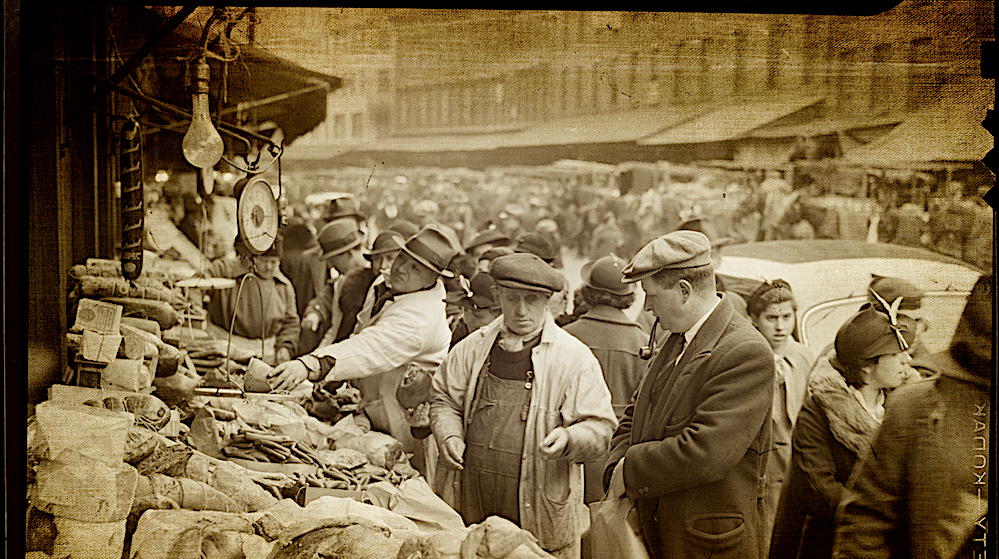
Boston Food Market, circa 1950
Boston is, actually, a
very small city:
A compact 90 square miles that seem
laid out by divining rod. Population is just
667,000. The city has only one
area code. The smallest suspension bridge in the
world is in the Boston
Gardens. You
can walk the entire Freedom
Trail in about an hour.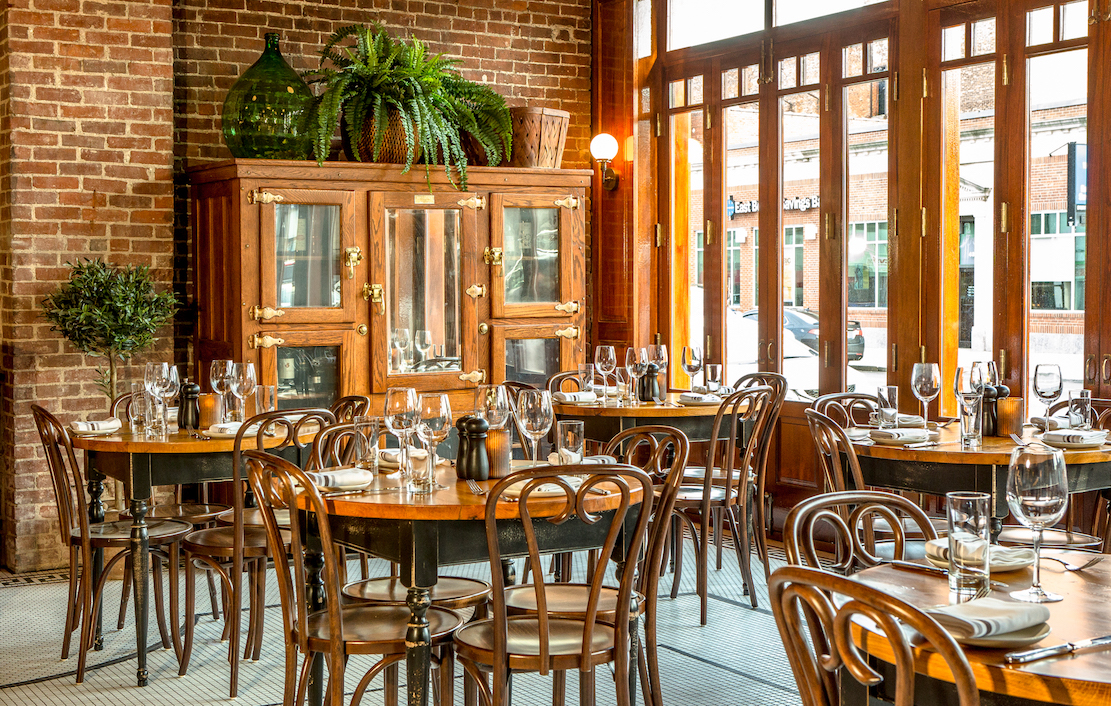
I
think it is that smallness that makes this
richly historic city so easy to walk
around (forget driving or mass transport!) and
to find so many fascinating
attractions, which include a very vibrant
restaurant segment, from the 19th
century Durgin-Park and the Union Oyster House
to the Italian storefronts of
the North End, to the stately hotel dining
rooms and expanding ethnic eateries
of the South End.
I never tire going to
Boston to seek out what’s
new and to bask in what’s old.
Here are the results of my most recent
visit, which included a dinner at
the big, bustling Capo restaurant (right) in
South Boston, where Chef Toni Susi
prepared a superb meal for about 30 guests of
dishes from my book How
Italian Food Conquered the World,
while still keeping the rest of the
restaurant clientele very happy and well
fed. I am very grateful and look forward to
going back to try more of his
cooking.
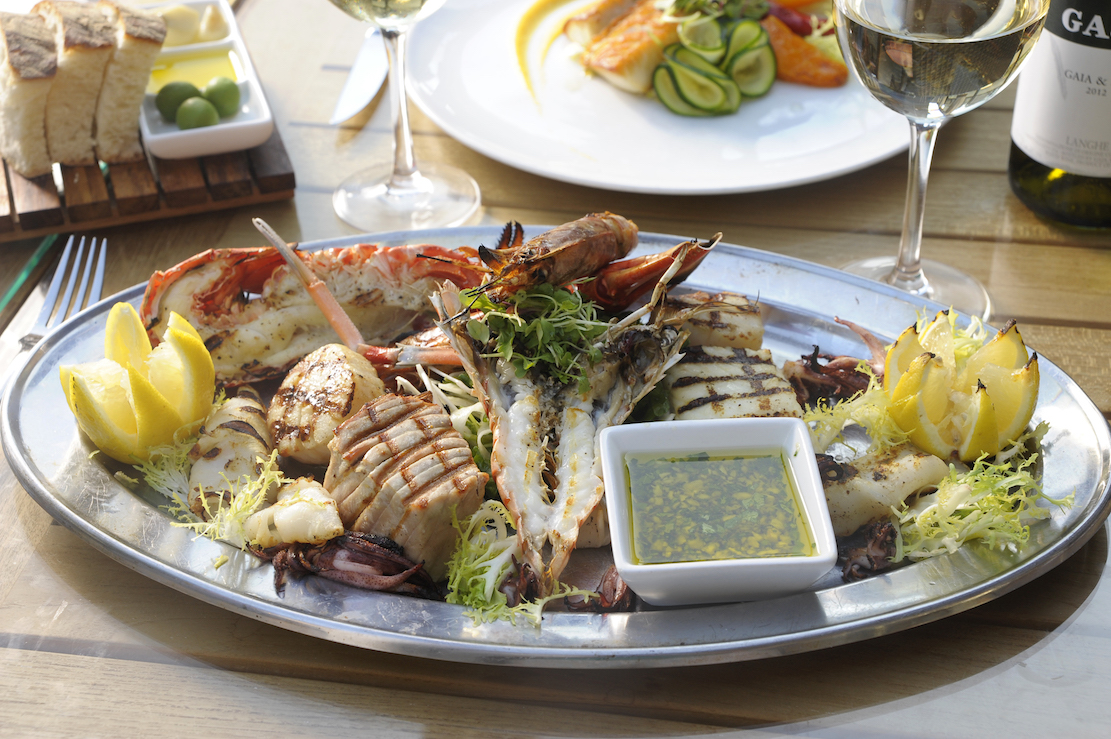 MARE
OYSTER CRUDO
MARE
OYSTER CRUDO
AND SEAFOOD BAR
3
Mechanic Street
617-723-6273
This is actually a new Mare
location in the
North End—Boston’s Little Italy—for owner Frank
DePasquale, who also runs the
always packed Bricco next door. As
the name says, there is a crudo bar
and
locally sourced oyster program, and Chef Nello
Caccioppoli is very
committed to sustainable seafood and has the
contacts from which to get the best.
Mare’s is a smart, uncluttered
design, with white marble
walls, floors and bars, while outdoors, with a
retractable awning, features
lounge seating and fire pits that allow guests to
bask into early autumn. 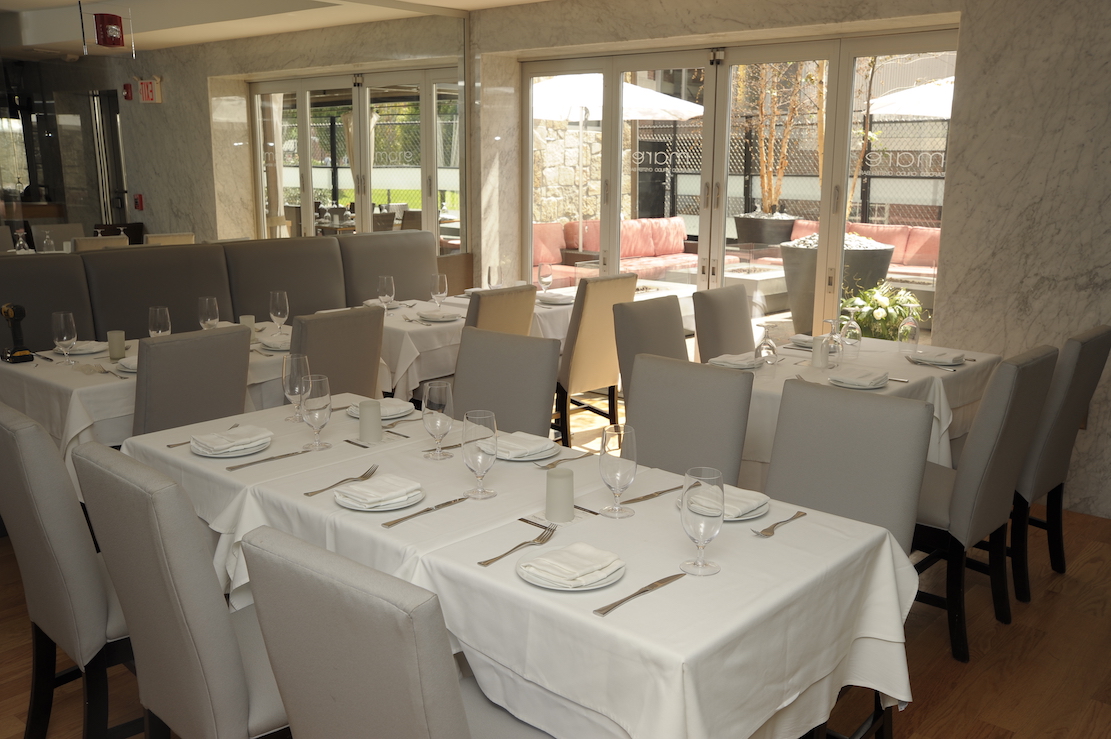
Among the appetizers I
recommend are the lovely
zucchini blossoms stuffed with ricotta and
lobster, served with mixed greens
and more lobster meat ($17.99), and the pristine,
wonderfully seasoned kampachi tartare
with spoonbill caviar
($18.99).
Skip the humdrum buffalo
mozzarella with
tomatoes and basil pesto ($17.99); instead opt for
one of the excellent seafood
pastas—lobster ravioli with fava beans, smoked
bacon and a cream sauce
($24.99), risotto with perfectly cooked shrimp,
scallops, calamari and Italian
cherry tomatoes ($24.99) or tagliatelle
with fresh lobster, shaved black truffles, tomato
and lobster sauce ($29.99),
all in portions ideal for two people to share.
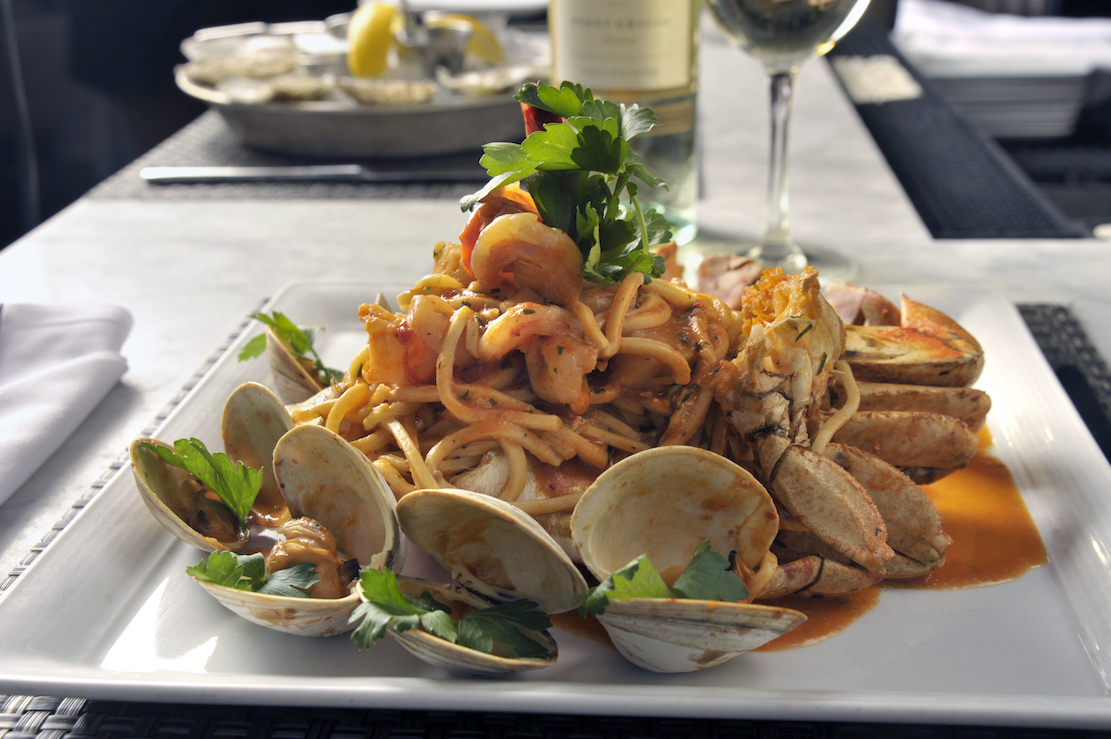
Prices at Mare are
remarkably moderate for the abundance of
food on the plate, like the silky Alaskan black
cod pan-seared in olive oil and
served with lobster-stuffed bell pepper and a
butternut squash fondue
($28.99). And
if there seems to be
a lot of lobster on the menu, who’s fool enough to
complain?
General
Manager Rita D’Angelo is one of
Boston’s beloved restaurant people, and a great
deal of the success of Mare is
owed directly to the enthusiasm and Italian brio
of her personality and
considerable charisma. This woman
wants you to eat well. She’ll
nudge you to try what just came in that day. She wants you to drink good
wine, have a wonderful
time. Toast
life! It
is impossible not to give in.
Open
nightly for dinner.
79 Park Plaza
617-422-0008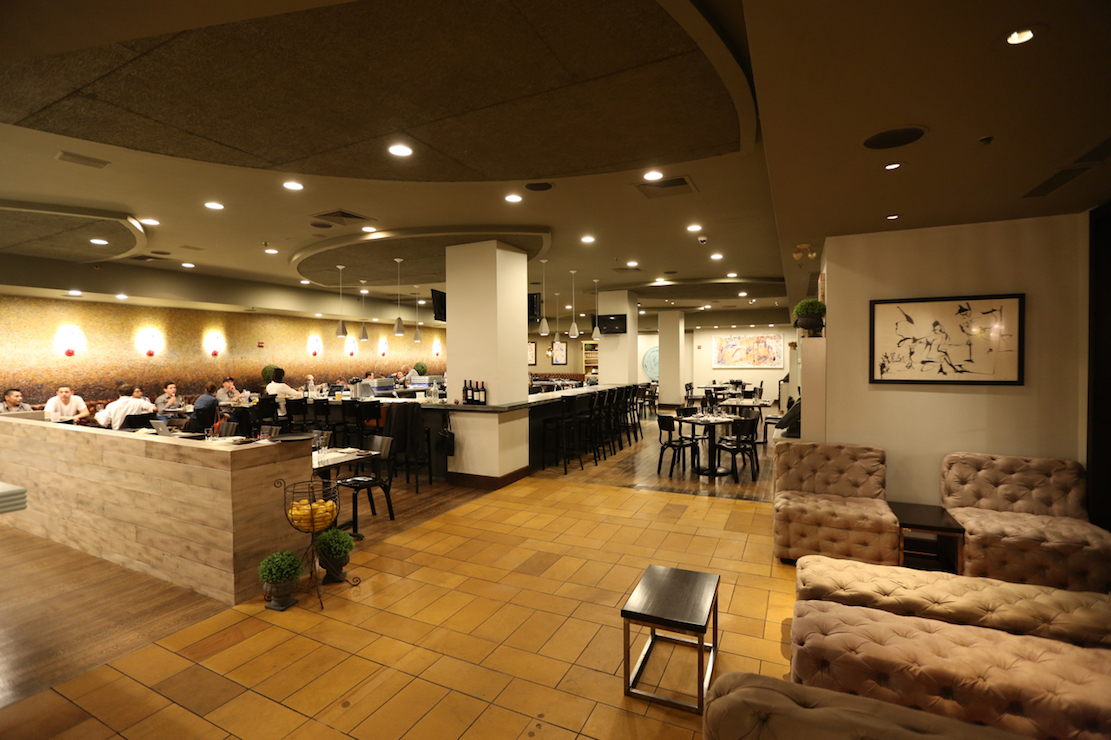
Doretta is veteran
chef-restaurateur Michael
Schlow’s homage to his wife Adrienne’s Greek
background—she created and crafted the amazing,
very beautiful, shimmering 60-foot wall in the
dining room—and many of the
recipes are from her family. No
man has ever paid better tribute to the woman and
the women behind the woman
he loves.
At dinner you can arrange a
“Greek Family
Dinner” ($75), which will include the irresistible
spreads and mezze
($7 each), which are so good that
you could feast all night by just ordering an
array—then maybe another array—of
these brilliantly colored dishes 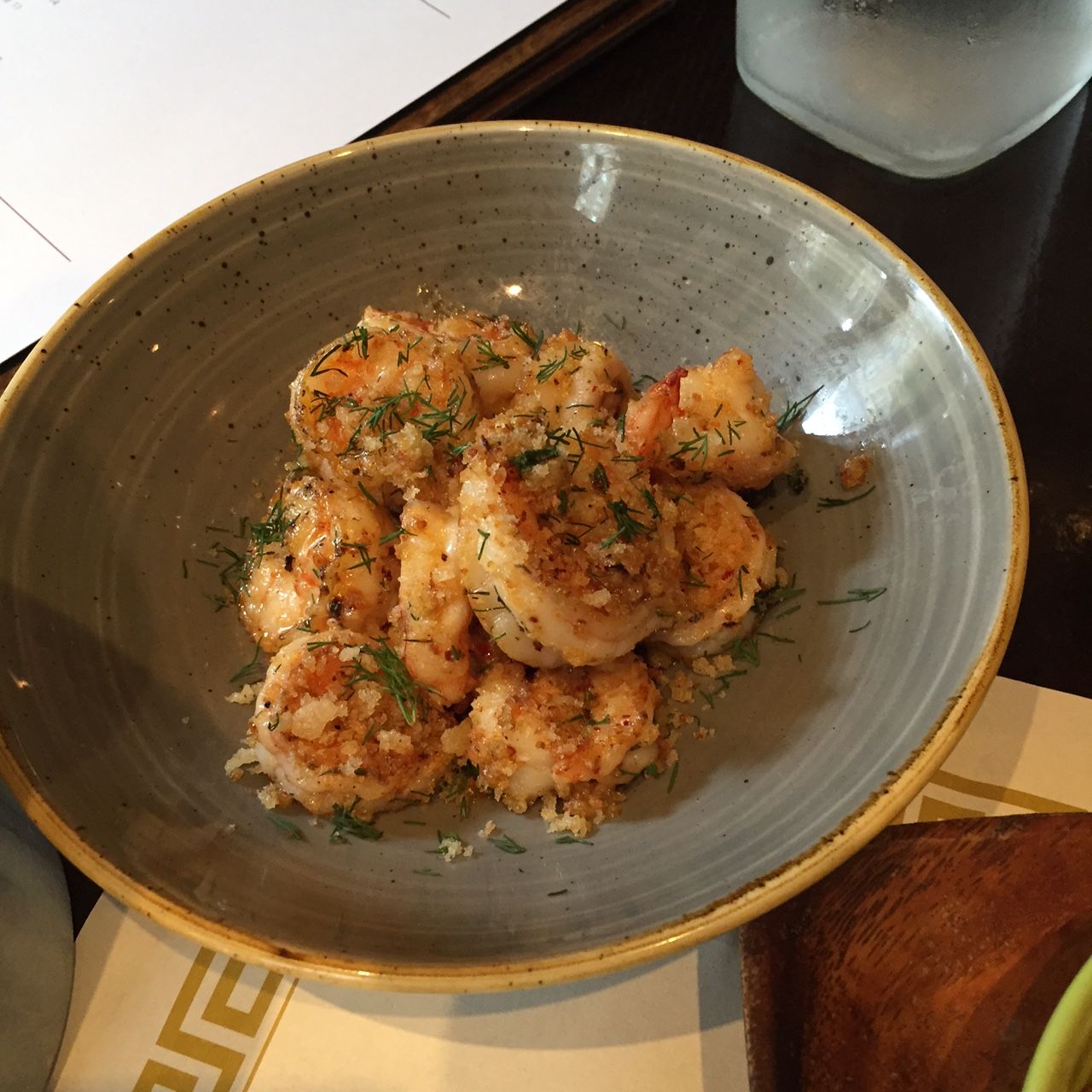 of chickpeas fragrant
with rosemary
and toasted cumin, or smoky
roasted eggplant with walnuts, peppers and feta
cheese. There
are crunchy zucchini chips with a
cucumber yogurt ($12); roasted
carrots with onion, yogurt and spiced granola
($14); and succulent braised lamb
with orzo pasta, spinach, cheese and Kalamata
olive-spiced breadcrumbs ($16).
of chickpeas fragrant
with rosemary
and toasted cumin, or smoky
roasted eggplant with walnuts, peppers and feta
cheese. There
are crunchy zucchini chips with a
cucumber yogurt ($12); roasted
carrots with onion, yogurt and spiced granola
($14); and succulent braised lamb
with orzo pasta, spinach, cheese and Kalamata
olive-spiced breadcrumbs ($16).
The grilled, lightly charred
octopus with
onions, capers, parsley and Greek olive oil ($18) is some of the best
you’ll find in the city, and don’t
miss the crispy lamb meatballs scented with cumin
and lavished with brilliant
red tomato sauce, creamy yogurt and nigella seed
($14). Better
order more than one portion of
the warm shrimp (left)
with lemon, dill, chili and bread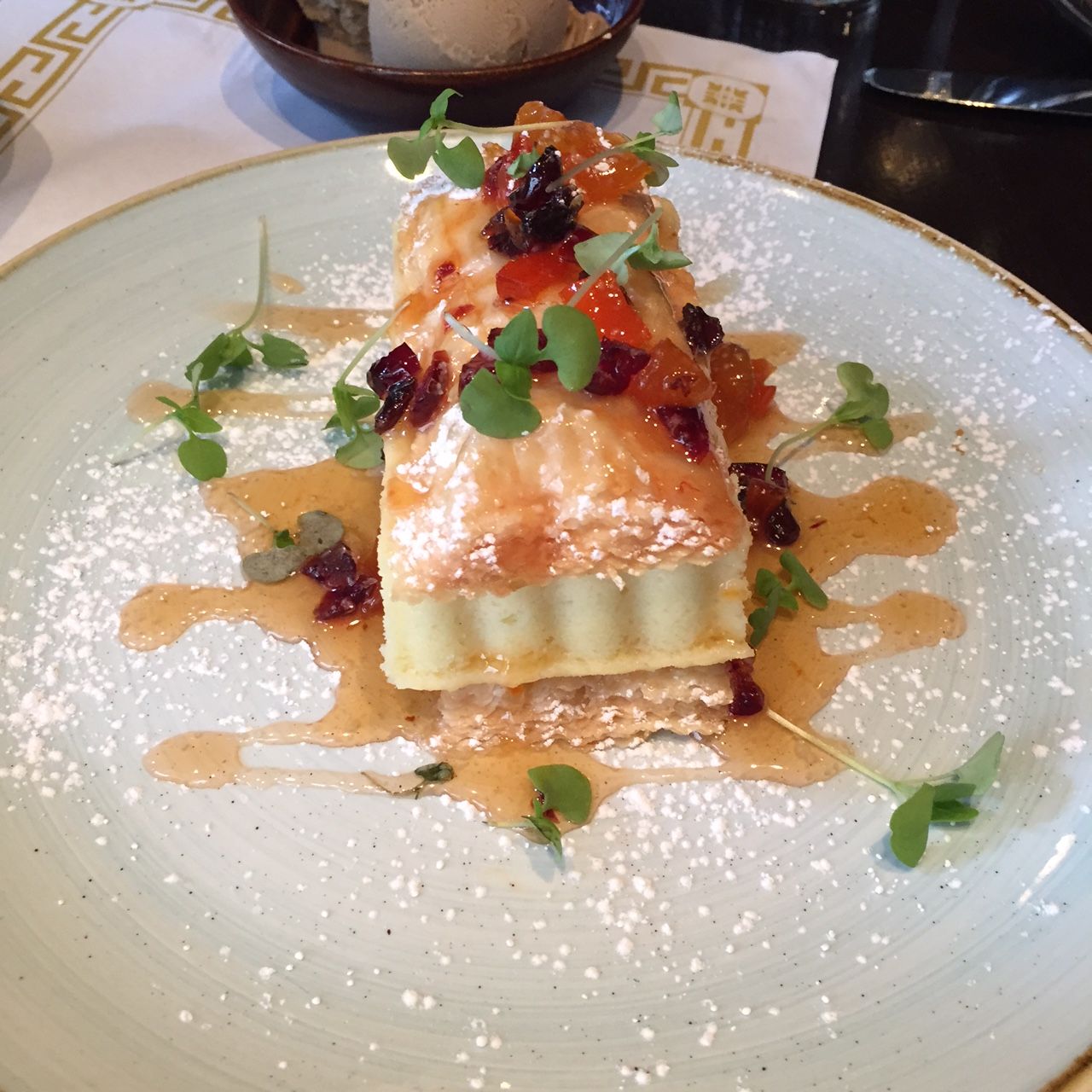 crumbs ($14) because
they
will be fought over.
crumbs ($14) because
they
will be fought over.
There is, of course, a whole
grilled fish of
the day (MP), and as well as a house-made pasta
with stewed rabbit, cinnamon,
chili and kefalotiri
goat’s milk
cheese ($26).
Lamb shoulder is cooked very slowly--for 15
hours--so
the meat falls from the bone, served with fava
beans and quinoa tabouli ($32).
For dessert it’s tough to
decide among simple
Greek yogurt with candied walnuts and thick Attic
honey ($9), or the fragile
baklava with a smoked apple gelato ($10), or
Mimi’s Greek cookie plate ($9).
I applaud
the inclusion of three dozen Greek
wines on the list at Doretta, along with scores
more of Italian and French
wines, though I wince at some of the markups, like
300 percent on a bottle like
the Darydas Xinomavro ( $72).
Lunch Mon.-Fri., Dinner nightly.
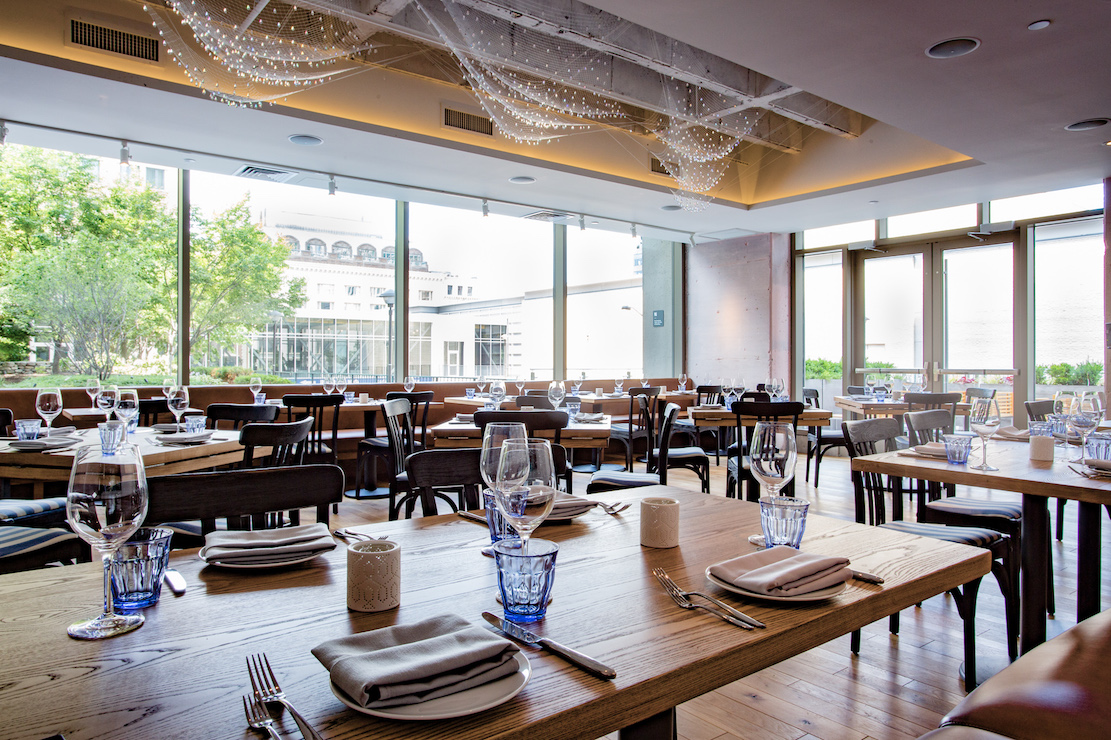 PORTO
PORTO
780 Boylston Street
Ring
Road
617-536-1234
Boston may have more great woman
chef-restaurateurs than any city in America—Lydia
Shire, Barbara Lynch, Ana
Sortun, Marisa Iocco, Joanne Chang, among
others—and one of the first was Jody
Adams, who long ago set a high standard for
Italian food at Rialto in Cambridge
(now closed).
Now, with partner Sean
Griffing and chef-partner Eric Papachristos, she  has
opened in Back Bay one of the sunniest, most
evocative Mediterranean
restaurants this side of Gibraltar.
has
opened in Back Bay one of the sunniest, most
evocative Mediterranean
restaurants this side of Gibraltar.
The whole room lies within expanses
of glass, with an open
kitchen, bare wood tables, pin lights tucked into
delicate fishing nets, and bright
blue and white Mediterranean colors throughout. You won’t think you’re on
the seafront at Thessaloniki
(where Papachristos was raised), but when twilight
comes on, Back Bay takes on
a rosy-fingered glow.
At lunch time Porto’s menu is
fairly unremarkable—lobster roll, lamb burger,
skirt steak—but at dinner
everything shifts into the Mediterranean mode,
although since I visited in
early fall the menu now seems to skewer a bit more
towards Italy than Greece. There are several
raw items, along with
fried, curried oysters with a lemon aïoli ($13);
tender clams rich with guanciale bacon,
and the scent of fennel
on grilled 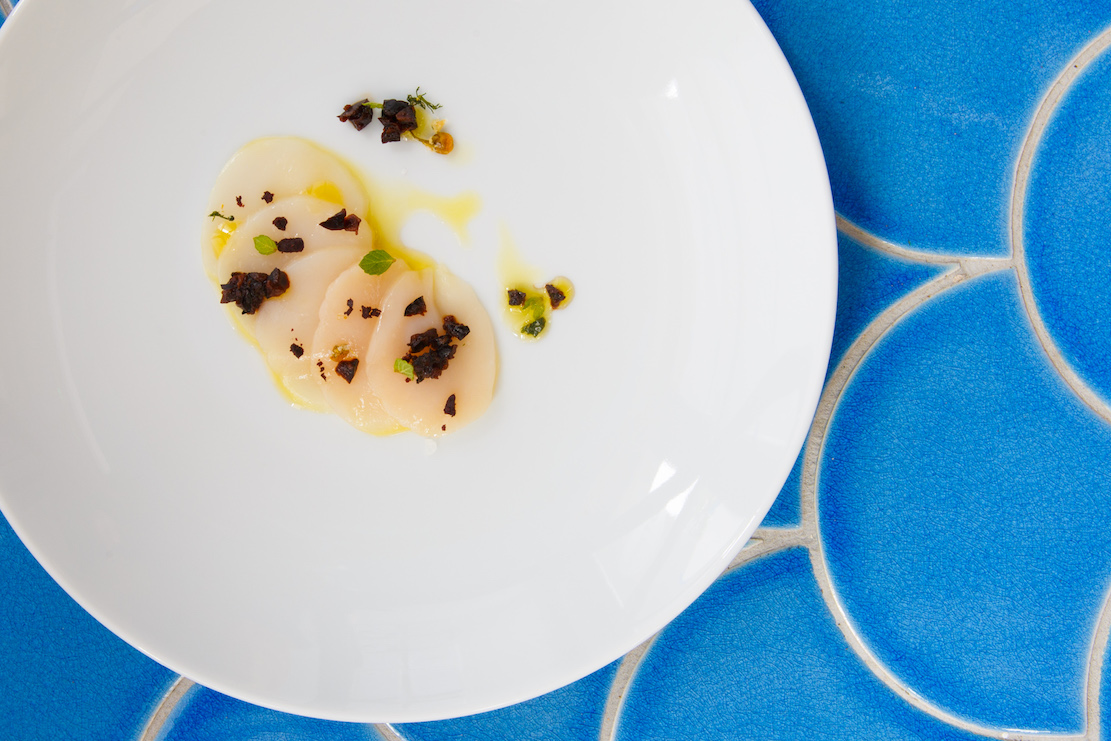 bread
($17); creamy salt cod brandade with sunchoke and
parsley crostini ($14);
and colorful squid ink bucatini with
a bite of chorizo ($16). I particularly
loved the translucent raw scallops ($16) with
chamomile, Niçoise olives and lemon
balm (left).
bread
($17); creamy salt cod brandade with sunchoke and
parsley crostini ($14);
and colorful squid ink bucatini with
a bite of chorizo ($16). I particularly
loved the translucent raw scallops ($16) with
chamomile, Niçoise olives and lemon
balm (left).
The main courses feature simply
grilled seafood, as well as a fried whole fish
with okra, fennel, radish and an
aïoli ($30) and a fine, ruddy seafood stew teeming
with hake, mussels, squid, and
yellow-eyed beans ($28).
For dessert ($9-$12) I
recommend the Greek yogurt pannacotta with
almond-pistachio and filo or the ginger and
pear galette with a crunch of sesame seeds.
It would be nice to see more good
Greek wines by the glass on a list that tilts,
wisely, towards whites.
Lunch and
dinner Mon.-Sat.
SMOKE SHOP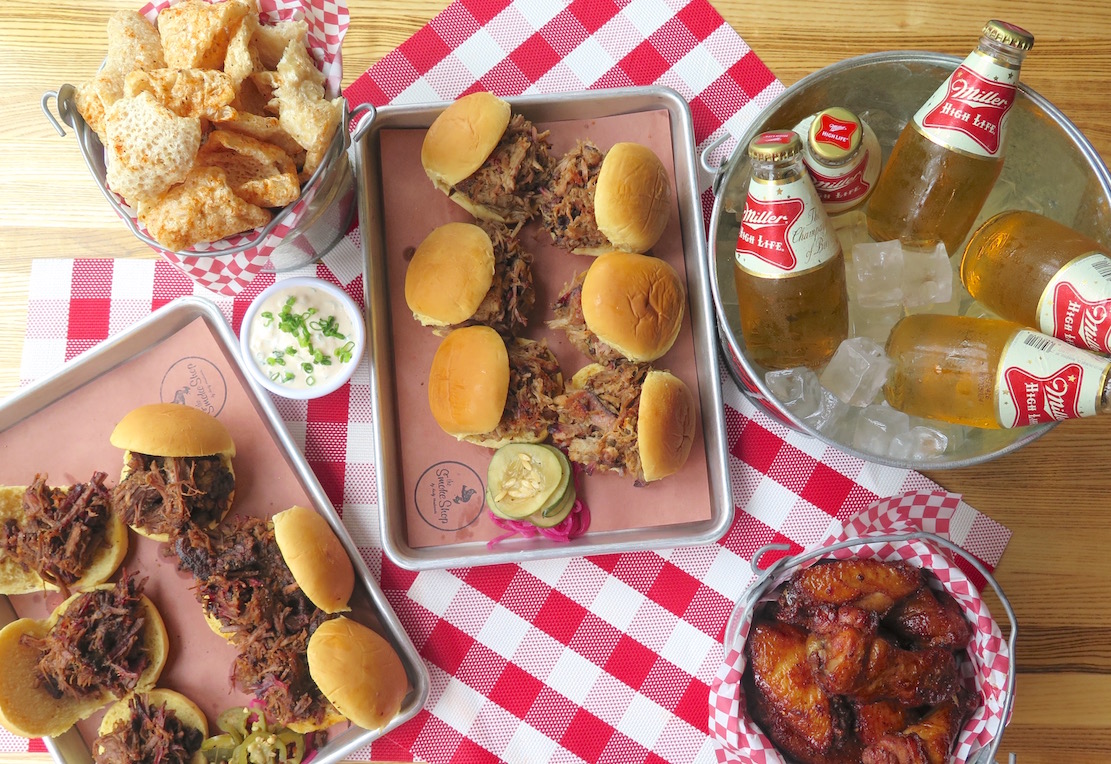
1
Kendall Square, Cambridge
617-577-7427
Photos by Ken Goodman
I long ago gave up any notions
that good
barbecue cannot be made north of the Mason-Dixon
Line or northeast of Texas, and
Smoke Shop proves the point. As
well it should, given owner Andy Husbands’ rep for
garnering the title of World
Barbeque Champion Chef and a slew of regional
championships.
Twenty years
experience has honed his craft, so Husbands calls
his barbecue “a modern
competition-style barbecue,” or “City Q,” drawing
on styles from Memphis,
Kansas City and Texas, with Asian influences and
New England seasonality. To sweeten the
message, Smoke Shop stocks more than a hundred
American whiskeys.
You just have to
look at the accompanying photos to see that it is
the real deal: pulled pork
($31) and pork rinds, with a bucket of cold Buds;
perfectly charred ribs ($31)
with nice touches of collards, white beans,
watermelon and pickles. Chicken wings are such a
cliché, but
Husbands adds his own spices and agave to give
them a new twist ($18.95); he
also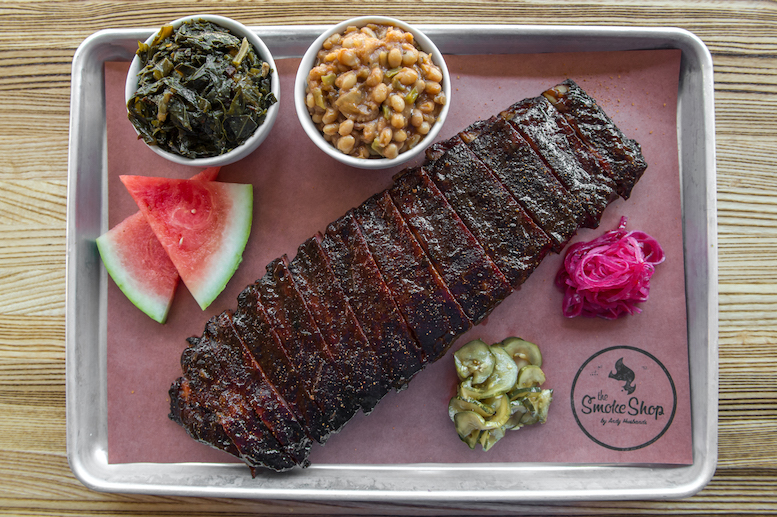 does an
excellent buttermilk brined fried chicken with
ranch dressing
($18). There’s also burnt ends of beef ($20). And,
although these prices are on
the high side—this is
Boston, not
Brownsville, after all—two side dishes are
included. It almost seems a winking
joke that they serve crispy tofu
and Brussels sprouts with a farro salad ($19),
which makes me recall the scene
in the movie Son of
Paleface when
Harvard man Bob Hope sheepishly orders
sarsaparilla in a rowdy western saloon,
then snarls, “And put it in a dirty glass.”
does an
excellent buttermilk brined fried chicken with
ranch dressing
($18). There’s also burnt ends of beef ($20). And,
although these prices are on
the high side—this is
Boston, not
Brownsville, after all—two side dishes are
included. It almost seems a winking
joke that they serve crispy tofu
and Brussels sprouts with a farro salad ($19),
which makes me recall the scene
in the movie Son of
Paleface when
Harvard man Bob Hope sheepishly orders
sarsaparilla in a rowdy western saloon,
then snarls, “And put it in a dirty glass.”
Smoke
Shop is a big,
wide open place, with outside tables in good
weather, and manager Ian Grossman
never seems to flag in his eagerness to please. Located as it is in Kendall
Square, you’ll be rubbing elbows
with the techie nerds from M.I.T, but they’re too
busy on their cell phones and
laptops to get in your way of having a good time. So bring your proud friend
from North Carolina or your
bragging Texan ‘cue expert. They
may have to eat some crow.
Open
11 a.m.
to 1 a.m. Mon.-Sat.
❖❖❖
By John Mariani
Photos by Samira Bouaou
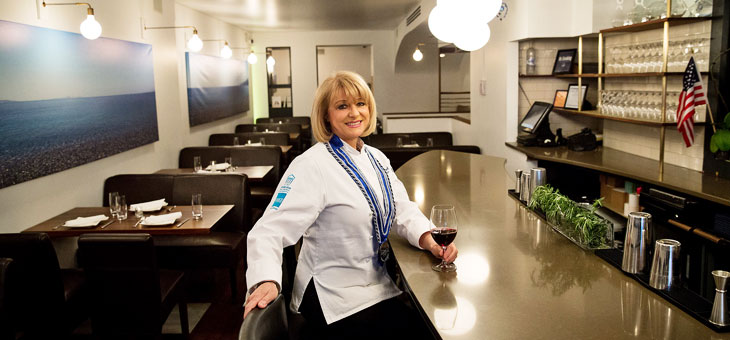 LOI
ESTIATORIO
LOI
ESTIATORIO 132 West 58th Street (near Seventh Avenue)
212-713-0015
Loi
Estiatorio without Maria
Loi would not really be Loi.
Of course, one could
say that about many restaurants whose owner’s name
is on the awning, but in so
few cases these days do those owners ever set foot
in their own
establishments.
When you enter
Loi, you’ll always find Loi everywhere.
She’s the vivacious
Greek woman with the blond bob, the big glasses,
the white chef’s coat and a
ribboned medallion. She may be at the bar signing
copies of her latest book, The Greek
Diet (Harper Collins)—she’s
written 35—or she may be posing for photos with
her admiring guests.
More than anything
it is her infectious spirit—what the Greeks call efforia—that sets the ambiance at
Loi, a slender 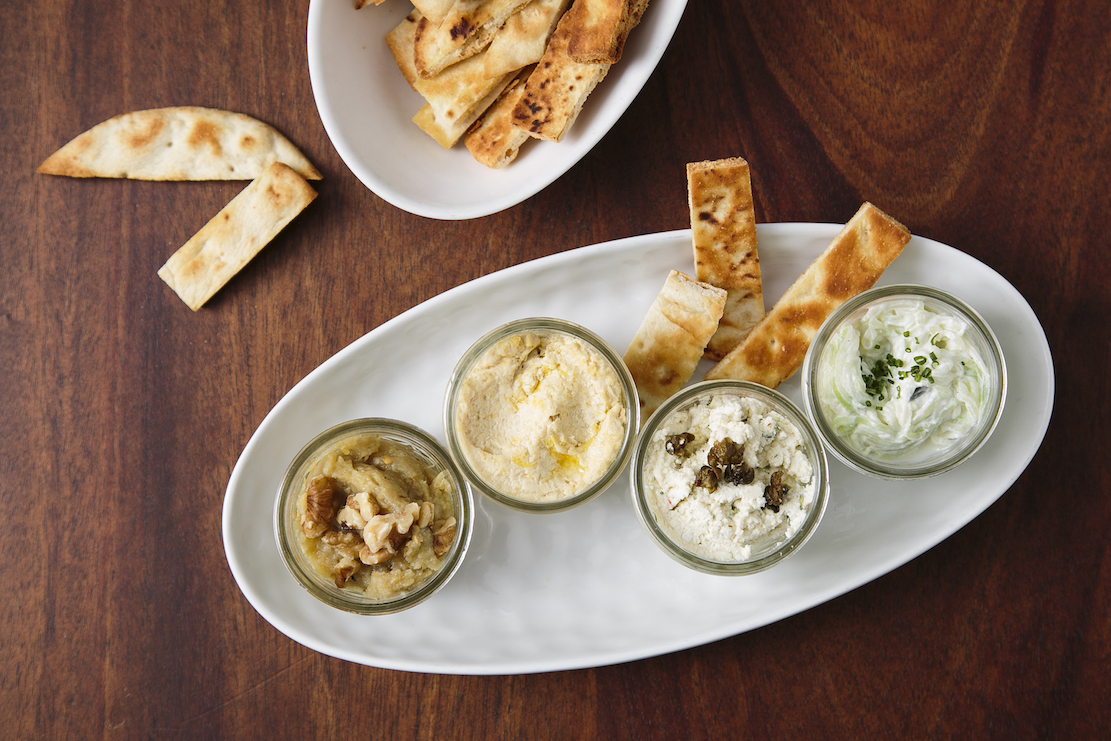 room with
seascape
murals of Nafpakt
room with
seascape
murals of Nafpakt
os, the town where Maria was born. The place seems
just big
enough to be her own home’s dining room, and
everybody in the place seems to
know her, or wants to know her.
Maria arrived in New
York a few years ago and fell in love with the
city, and she was determined to
bring her own spirit of Greek cookery to town, at
first, in 2011, in a
too-large restaurant on the Upper West Side. The new, smaller quarters
(60 seats) on West 58th Street,
almost two years old, are a better fit all around. I just wish they turned up
the lighting a bit, which would
add even more to the conviviality.
I am grateful, though, that the noise level
in the room is wholly
civilized. Thick white tablecloths help.
Before emigrating to
NYC, Maria Loi had been appointed the official
Ambassador of Greek Gastronomy—twice—by
the Chef’s Club of Greece; she had her own TV show
on PBS, “Cooking with Loi,”
and she cooked at the Obama White House for 250
guests, and last year was
invited to be a panelist at the Mediterranean Diet
Roundtable Conference in
LA. She
even has her own Greek
food line at Whole Foods Market, and keeps a
namesake restaurant back home in
Nafpaktos.
The menu at Loi is
in three parts: Classic Greek dishes, “Village
Dishes” and Maria’s own
specialties, so it’s good to order from each and
to consult with the very
helpful staff.
Maria points out
that none of her food is fried, which is one of
the things that distinguishes
her restaurant from a taverna.
The wine list
is modest, with high
mark-ups: A Dougos Assyrtikos that costs $16 in a
wine shop, $62 here, and a
Porto Carras red is $25 versus $88.
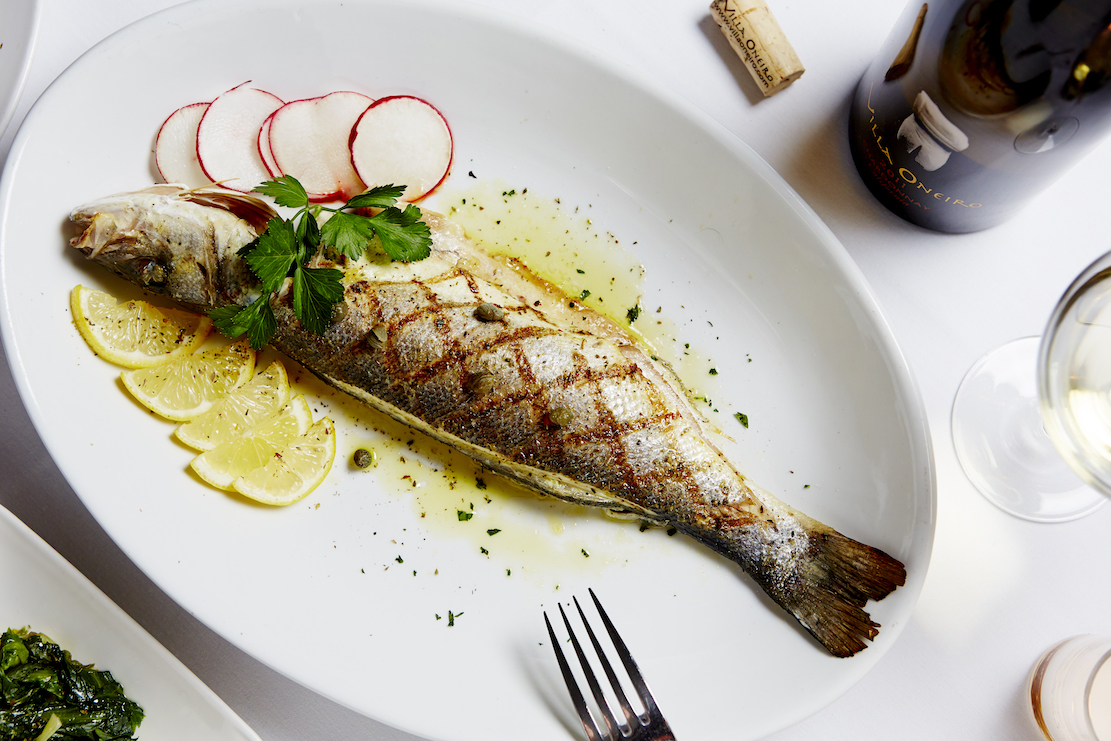 Complimentary
pougi is
an amuse bouche
of thick,
housemade yogurt, feta, roasted cherry tomatoes,
fresh herbs, Greek oregano,
and olive oil, all baked in parchment paper and
served warm tableside. (Incidentally,
in her book Maria says
she used to have food fights with her sister,
throwing yogurt at each other,
then using it to moisturize their faces.)
Complimentary
pougi is
an amuse bouche
of thick,
housemade yogurt, feta, roasted cherry tomatoes,
fresh herbs, Greek oregano,
and olive oil, all baked in parchment paper and
served warm tableside. (Incidentally,
in her book Maria says
she used to have food fights with her sister,
throwing yogurt at each other,
then using it to moisturize their faces.)
With
the yogurt comes a basket of both whole grain
pitas
and, unexpectedly, some delicious cornbread
biscuits. I was a bit surprised that
this basket was not replenished
throughout the evening, which is customary in
Greek restaurants.
The
appetizer
portion of the menu toes a fairly predictable
line, including grilled halloumi cheese
with lemon, olive oil
and fragrant Greek oregano ($17);
a salad of tomato, red onion, green pepper,
cucumber, Kalamata olives,
feta and olive oil ($16); and a savory spinach pie
with dill, mint, feta and
phyllo ($15).
Delightfully out of
the ordinary was stuffed eggplant with zucchini,
bell peppers, onion, tomato
and rich Greek-style béchamel ($18), which was
also layered into a Greek
lasagna with slowly cooked spiced beef, tomato,
house-made pasta and myrzithra cheese
($29). Crispy
octopus croquettes ($18) were
new to me, little balls of ground, seasoned
octopus, pleasant but a bit
bland. Another
octopus dish was a
signature special, hatapodaki stin schara,
slowly cooked, then grilled, tossed in ladolemono
lemon-olive oil emulsion and
served over a bed of fava purée with capers,
red-wine macerated onions and
topped with micro chives ($21).
Lamb shank is a
hearty, succulent dish, suffused with red wine and
abundant with tomato, onion,
and lamb jus
and sided 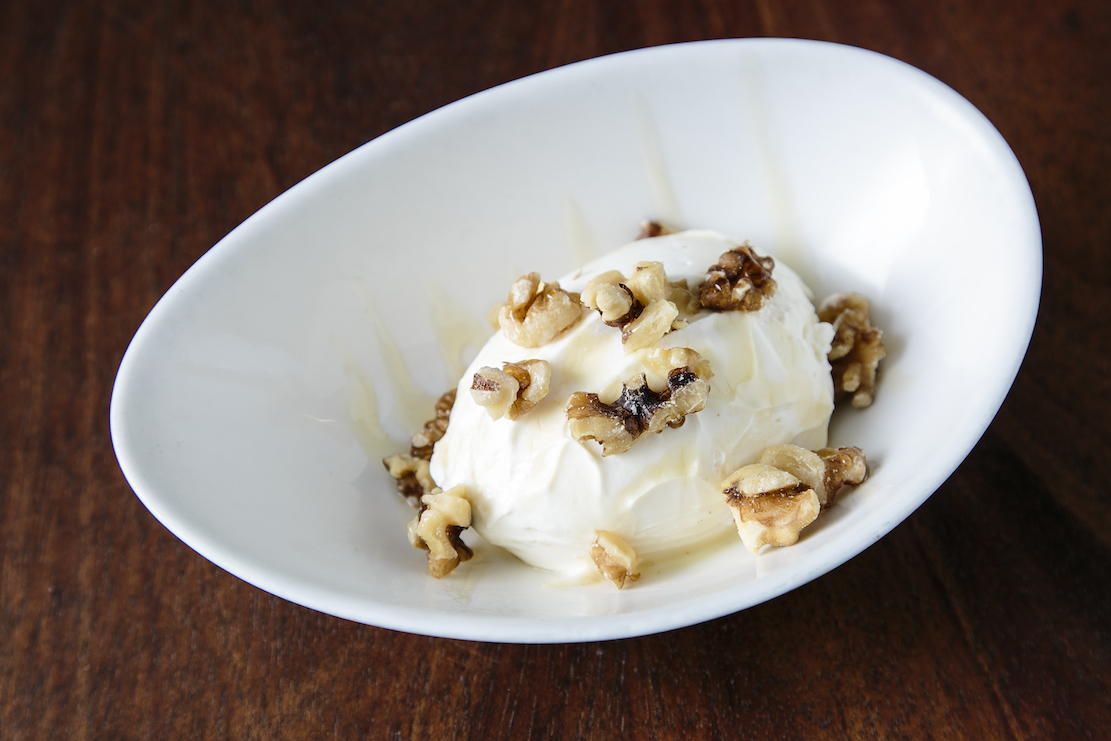 with orzo
($39). Special
one night were
good-sized langoustines (MP) with fat bodies and
sweet meat, simply graced with
olive oil and lemon, much the same as the star
dish of the evening—a lavraki
(sea bass or branzino)
whose flavor showed every sign
of having been recently plucked from the
Mediterranean rather than a fish farm.
Served with arugula ($39), it was as simple and
perfect as seafood from that
part of the world gets.
with orzo
($39). Special
one night were
good-sized langoustines (MP) with fat bodies and
sweet meat, simply graced with
olive oil and lemon, much the same as the star
dish of the evening—a lavraki
(sea bass or branzino)
whose flavor showed every sign
of having been recently plucked from the
Mediterranean rather than a fish farm.
Served with arugula ($39), it was as simple and
perfect as seafood from that
part of the world gets.
Don’t miss ordering
some side dishes like the gigante
beans braised in tomato with spinach ($11) or the
cauliflower steeped in tomato
($12).
For dessert (all
$10) you could be very happy with more of that
wonderful yogurt, now lavished
with Cretan honey and walnuts, or any of the
phyllo-pastry items, one with
custard and cinnamon, but I was most delighted by
a very dense cake of very
fine, light chocolate called sokolakopita
made with olive oil.
At meal’s
end, as
the room empties out, you may well want to stick
around and sip strong Greek
coffee and an after-dinner mastiha,
a
resinous Greek liqueur. Leaving a
room this warm and hospitable is not that easy,
and Maria Loi is happy to have
you linger.
Loi
Estiatorio
offers lunch Monday through Friday, and dinner
daily. There is a $44 prix fixe
pre-theater dinner.
❖❖❖
GOING FOR THE
LIQUID GOLD:
A
MADEIRA PRIMER
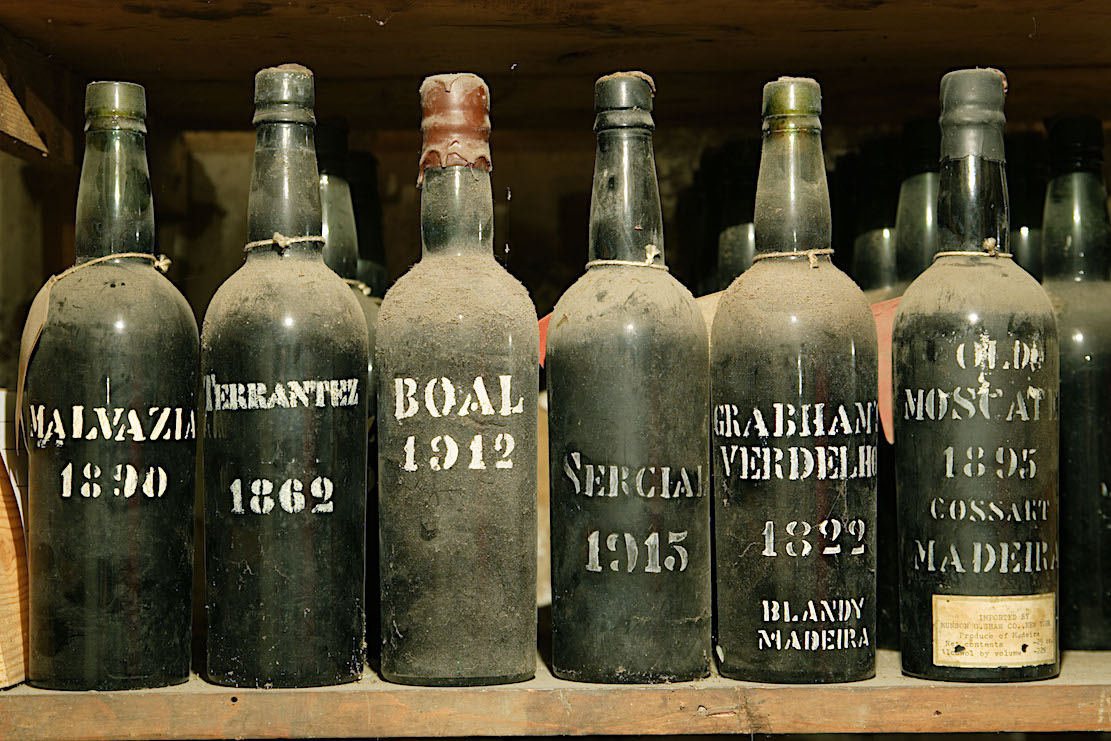
Often called “liquid
gold” because of its color
and price, Madeira was once the most popular
wine in the 13 colonies. In fact,
it was the libation used by our forefathers
to toast the signing of the
Declaration of Independence and the
Constitution. Moreover, George Washington
was reputed
to have consumed a pint of this purposely
oxidized, fortified beverage daily. 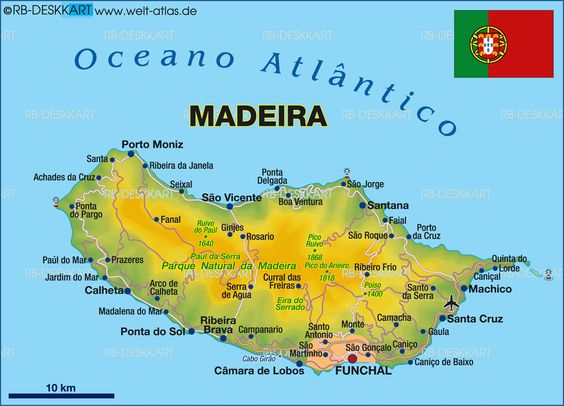
However, during the past
three hundred years,
along with the abandonment of tri-corner hats
and powdered wigs, overall U.S.
consumption of this prized beverage had
dwindled down to minuscule levels—well
overshadowed by the likes of California
Chardonnay, Cabernet and anything
French, Italian or Spanish.
According to Mannie Berk of the Rare
Wine Company, a leading U.S.
authority on the topic, a number of reasons
account for the decline in
popularity of Madeira. Made
since
the 17th century on the Portuguese island of
the same name (part of an Atlantic
archipelago west of Morocco), the wine was
“fortified” by the addition of
alcohol to prevent spoilage when shipped in
barrels across the Atlantic to
America (a prime customer). Not surprisingly,
because of the heat in the “holds”
of the ships, the wine became highly oxidized
during the voyage, adding a
unique bouquet and taste that the colonists
fancied.
But in 1800 the U.S.
imposed a three-fold
increase in import duty on Madeira. Then in
the 1850s the grapes were infected
with a fungal disease (Odium) and then by a
plant louse in the 1870’s, with an
overall decrease in quality. Next came
Prohibition, followed by a trend towards
lower-alcohol wines. On the up side, Berk and
others closely involved in the
Madeira trade note, adventurous U.S.
consumers, many of whom seem to favor
higher alcohol content in their libations, are
now discovering the product. In fact, Blake 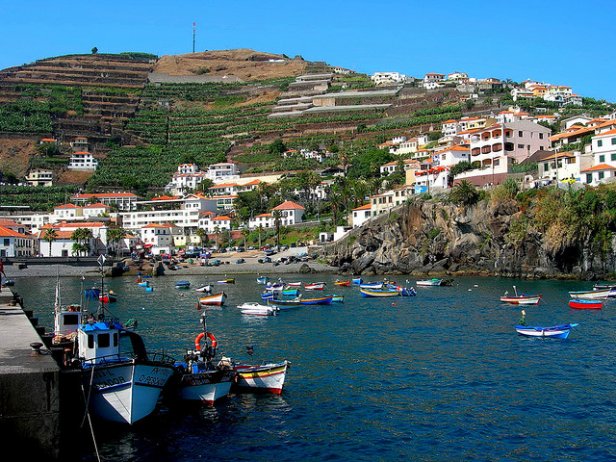 Murdock,
managing director of
the Rare Wine Company,
notes that “the U.S. resurgence in Madeira
over the past 10 years has been the
driver for enhanced worldwide interest in the
product.”
But he and Berk strongly feel that to
continue the rush for this liquid gold,
consumers need to better understand the
basics of the product and be open to tasting
it.
Murdock,
managing director of
the Rare Wine Company,
notes that “the U.S. resurgence in Madeira
over the past 10 years has been the
driver for enhanced worldwide interest in the
product.”
But he and Berk strongly feel that to
continue the rush for this liquid gold,
consumers need to better understand the
basics of the product and be open to tasting
it.
Though perhaps
oversimplified, the basics are
as follows: Madeira is still made on the same
Portuguese island as in the 1700s
from any of a number of grapes, but primarily
the Sercial, Verdelho, Bual,
Malmsey and Tinta Negra Mole varietals. During
fermentation brandy is added to
fortify the wine and then it’s “cooked” by
either heating the wine to a
temperature of about 120 degrees Fahrenheit
for a few days or, preferably, by
exposure of the barrels to the heat of the sun
for a period of three or more
years. Generally, the final product contains
about 20% alcohol and varying
degrees of sweetness—depending on when the
brandy was added to stop the
fermentation of grape sugar into alcohol.
But,
no matter what varietal is used, the wine
is produced to contain a lively acidity that
prevents the sweeter styles from
acquiring a cloying taste. When labeled with
the name of a particular grape
varietal, such as Sercial or Malmsey, the wine
must contain at least 85% of the
juice of that grape and generally contains a
prescribed, pre-determined degree
of sweetness.
For example, most Madeira
produced from Sercial
is light in color and body, with a bouquet and
taste of almonds; that from
Verdelho is slightly sweet with a smoky
fragrance and flavor; Bual is sweet
with a taste of raisins and apricots; and
Malmsey is dark in color, with a rich
taste of caramel and notes of honey. An
additional style, very popular in the
U.S., is “Rainwater,” which is primarily made
from the Tinta Negra Mole
varietal and is similar in color and body to
the lighter Sercial but closer in
taste to the slightly sweeter Verdelho.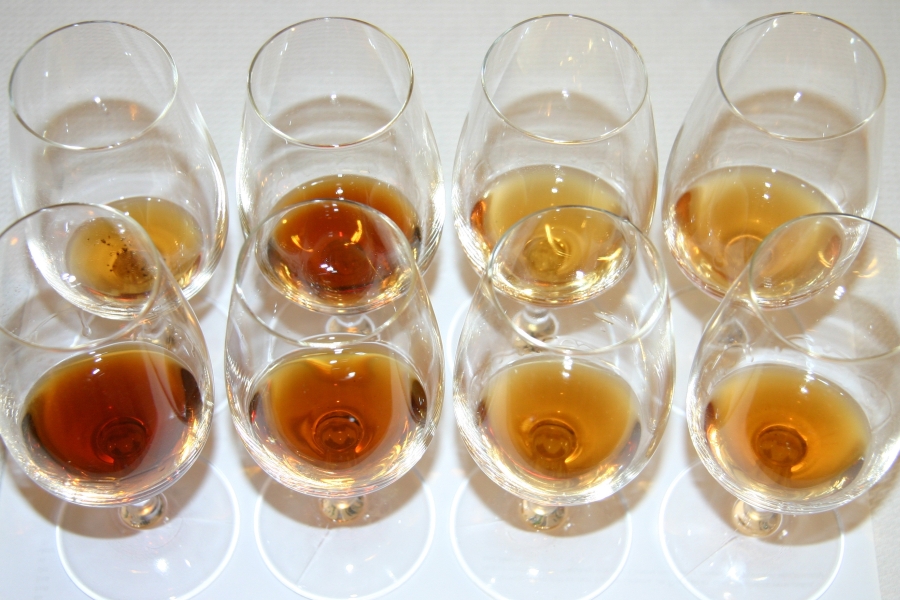
Aging also plays a big part
in the aesthetics
(and price) of Madeira, with the following
major categories (only used for wine
made from a least 85% of the Sercial,
Verdelho, Bual or Malmsey grapes):
Reserve
denotes a wine usually made from
multiple vintages that is
aged a
minimum of five years.
Special Reserve
is usually made from multiple
vintages but aged at least 10 years.
Extra Reserve
is usually made from multiple
vintages but must be aged at least 15 years.
Colheita
must be made from a single vintage and
aged at least 5 years in casks.
Vintage Madeira
must be made from a single
vintage and aged for at least 19 years in
casks and one year in the bottle
before release.
For example, a Special Reserve Sercial would
be
a fairly dry wine with an almond flavor made
from grapes harvested in multiple
vintages and aged at least 10 years—such as
Barbieto Sercial Charleston Special
Reserve, retailing for about $50 a 750ml
bottle. And a Bual would be a
rather sweet wine with a raisin and
apricot taste made from grapes harvested from
a single vintage and aged at
least 20 years—such as Blandy’s 1969 Vintage
Bual, retailing for about $230.
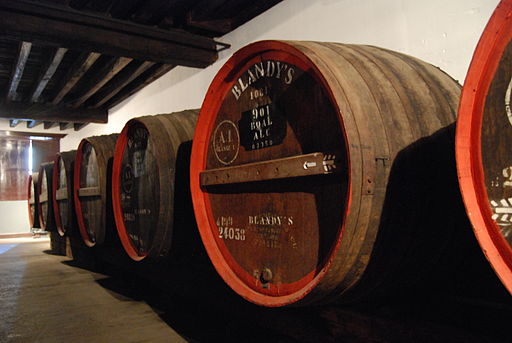 Once
bottled, Madeira does not usually improve
with age but can retain its bouquet and taste
for extensive periods of time.
Bottles should be stored in an upright
position because the high alcohol
content and generally long storage periods can
cause deterioration of the cork.
After being opened, the wine can be stored in
the bottle, or in a lead-free
decanter, and will usually not diminish in
bouquet and taste for at least six
months. When serving
Madeira it should be at room
temperature so as to show as much aroma as
possible and, while it’s traditional
to serve the wine in port-type glasses, I find
little difference in the effect
of glassware on the wine’s aesthetics.
Once
bottled, Madeira does not usually improve
with age but can retain its bouquet and taste
for extensive periods of time.
Bottles should be stored in an upright
position because the high alcohol
content and generally long storage periods can
cause deterioration of the cork.
After being opened, the wine can be stored in
the bottle, or in a lead-free
decanter, and will usually not diminish in
bouquet and taste for at least six
months. When serving
Madeira it should be at room
temperature so as to show as much aroma as
possible and, while it’s traditional
to serve the wine in port-type glasses, I find
little difference in the effect
of glassware on the wine’s aesthetics.
When matching Madeira with
food, I find that
Sercial mates particularly well with hors
d’oeuvres ranging from smoked salmon
to bruschetta to “pigs in the blanket.”
Verdelho matches the likes of pâté,
triple-crème cheeses and even poached salmon
and barbecued chicken. Bual makes
a good accompaniment to grilled pork or veal
chops and even steaks. And Malmsey
adds to the decadence of desserts like bread
pudding and crème brûlée and
blue-veined cheeses.
As
to the future for Madeira, Murdock comments:
“I think the versatility of the wines, along
with their singular styles, will
continue to expand the market. However, the
producers could certainly destroy
momentum with crazy price hikes, or they could
flood the market with mediocre
wines. But the hope is that producers navigate
the supply-demand curve with a
long-term focus on quality, and on continuing
incremental growth.”
❖❖❖
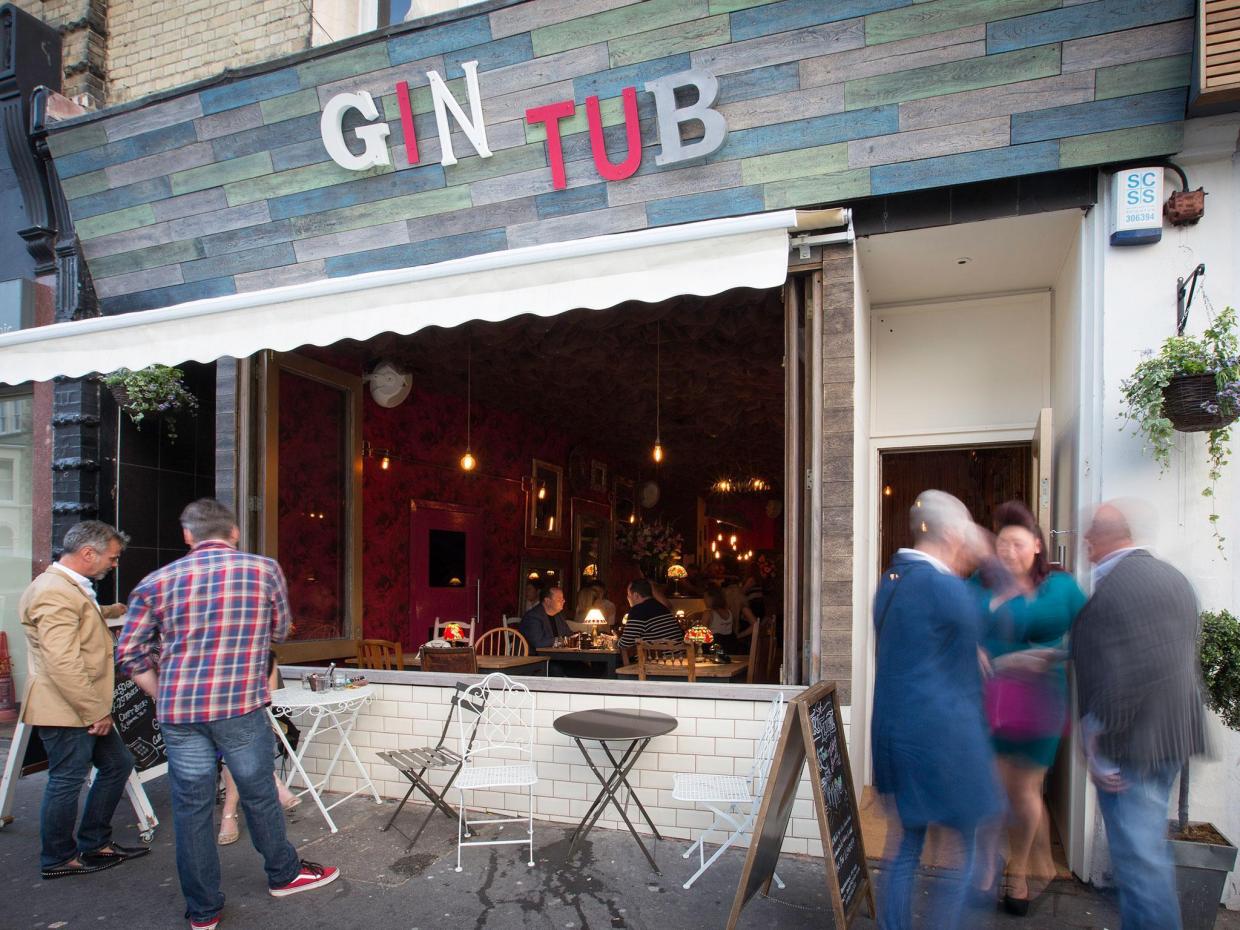 WHY THERE'LL ALWAYS
WHY THERE'LL ALWAYS BE AN ENGLAND
At the Gin Tub
in the English town of Hove, owner Steve Tyler has
covered the walls with tinfoil and hung
copper along the ceiling, which jams all signals and
makes it impossible for patrons to text, tweet, swipe,
Instagram, or Snapchat. Tyler told the BBC,
WHAT
YOU MEAN “WE,” KIMOSABE?
“Remember
a few years ago when we all went nuts for small plates?
And how we all bought into it until we realized we were
spending just as much money to eat less without having
any more fun. Well, Giant, the wonderful four-month-old
spot from Jason Vincent, Ben Lustbader (both of
Nightwood), and Josh Perlman (Avec), finally makes a
definitive case for the movement.”—Jeff Ruby, Giant and Ēma
Show the Best and the Blandest of Small Plates,” Chicago
Magazine (10/16/16)
Any of John Mariani's books below may be ordered from amazon.com.
 The
Hound in Heaven (21st Century Lion Books)
is a novella, and for anyone who loves dogs,
Christmas, romance, inspiration, even the supernatural, I
hope you'll find this to be a treasured favorite.
The story concerns how, after a New England teacher,
his wife and their two daughters adopt a stray puppy found
in their barn in northern Maine, their lives seem full of
promise. But when tragedy strikes, their wonderful dog
Lazarus and the spirit of Christmas are the only things
that may bring his master back from the edge of
despair.
The
Hound in Heaven (21st Century Lion Books)
is a novella, and for anyone who loves dogs,
Christmas, romance, inspiration, even the supernatural, I
hope you'll find this to be a treasured favorite.
The story concerns how, after a New England teacher,
his wife and their two daughters adopt a stray puppy found
in their barn in northern Maine, their lives seem full of
promise. But when tragedy strikes, their wonderful dog
Lazarus and the spirit of Christmas are the only things
that may bring his master back from the edge of
despair. WATCH THE VIDEO!
“What a huge surprise turn this story took! I was completely stunned! I truly enjoyed this book and its message.” – Actress Ali MacGraw
“He had me at Page One. The amount of heart, human insight, soul searching, and deft literary strength that John Mariani pours into this airtight novella is vertigo-inducing. Perhaps ‘wow’ would be the best comment.” – James Dalessandro, author of Bohemian Heart and 1906.
“John Mariani’s Hound in Heaven starts with a well-painted portrayal of an American family, along with the requisite dog. A surprise event flips the action of the novel and captures us for a voyage leading to a hopeful and heart-warming message. A page turning, one sitting read, it’s the perfect antidote for the winter and promotion of holiday celebration.” – Ann Pearlman, author of The Christmas Cookie Club and A Gift for my Sister.
“John Mariani’s concise, achingly beautiful novella pulls a literary rabbit out of a hat – a mash-up of the cosmic and the intimate, the tragic and the heart-warming – a Christmas tale for all ages, and all faiths. Read it to your children, read it to yourself… but read it. Early and often. Highly recommended.” – Jay Bonansinga, New York Times bestselling author of Pinkerton’s War, The Sinking of The Eastland, and The Walking Dead: The Road To Woodbury.
“Amazing things happen when you open your heart to an animal. The Hound in Heaven delivers a powerful story of healing that is forged in the spiritual relationship between a man and his best friend. The book brings a message of hope that can enrich our images of family, love, and loss.” – Dr. Barbara Royal, author of The Royal Treatment.
 |
The Encyclopedia of American Food and Drink by John F. Mariani (Bloomsbury USA, $35) Modesty forbids me to praise my own new book, but let me proudly say that it is an extensive revision of the 4th edition that appeared more than a decade ago, before locavores, molecular cuisine, modernist cuisine, the Food Network and so much more, now included. Word origins have been completely updated, as have per capita consumption and production stats. Most important, for the first time since publication in the 1980s, the book includes more than 100 biographies of Americans who have changed the way we cook, eat and drink -- from Fannie Farmer and Julia Child to Robert Mondavi and Thomas Keller. "This book is amazing! It has entries for everything from `abalone' to `zwieback,' plus more than 500 recipes for classic American dishes and drinks."--Devra First, The Boston Globe. "Much needed in any kitchen library."--Bon Appetit. |
"Eating Italian will never be the same after reading John Mariani's entertaining and savory gastronomical history of the cuisine of Italy and how it won over appetites worldwide. . . . This book is such a tasteful narrative that it will literally make you hungry for Italian food and arouse your appetite for gastronomical history."--Don Oldenburg, USA Today. "Italian
restaurants--some good, some glitzy--far
outnumber their French rivals. Many of
these establishments are zestfully described
in How Italian Food Conquered the World, an
entertaining and fact-filled chronicle by
food-and-wine correspondent John F.
Mariani."--Aram Bakshian Jr., Wall Street
Journal.
"Equal parts
history, sociology, gastronomy, and just
plain fun, How Italian Food Conquered the
World tells the captivating and delicious
story of the (let's face it) everybody's
favorite cuisine with clarity, verve and
more than one surprise."--Colman Andrews,
editorial director of The Daily
Meal.com. "A fantastic and fascinating
read, covering everything from the influence
of Venice's spice trade to the impact of
Italian immigrants in America and the
evolution of alta cucina. This book will
serve as a terrific resource to anyone
interested in the real story of Italian
food."--Mary Ann Esposito, host of PBS-TV's
Ciao
Italia. "John Mariani has written the
definitive history of how Italians won their
way into our hearts, minds, and
stomachs. It's a story of pleasure over
pomp and taste over technique."--Danny Meyer,
owner of NYC restaurants Union Square
Cafe, The Modern, and Maialino.
|
 |
 |
 |
 |
 |
 |
 |
 |
 Everett Potter's Travel Report:
Everett Potter's Travel Report: 
 Eating Las Vegas
JOHN CURTAS has been covering the Las Vegas
food and restaurant scene since 1995. He is
the co-author of EATING LAS VEGAS – The 50
Essential Restaurants (the fourth
edition of which will be published in early
2016), as well as the author of the Eating Las
Vegas web site: www.eatinglasvegas.
He can also be seen every Friday morning as
the “resident foodie” for Wake Up With the
Wagners on KSNV TV (NBC) Channel 3 in
Las Vegas.
Eating Las Vegas
JOHN CURTAS has been covering the Las Vegas
food and restaurant scene since 1995. He is
the co-author of EATING LAS VEGAS – The 50
Essential Restaurants (the fourth
edition of which will be published in early
2016), as well as the author of the Eating Las
Vegas web site: www.eatinglasvegas.
He can also be seen every Friday morning as
the “resident foodie” for Wake Up With the
Wagners on KSNV TV (NBC) Channel 3 in
Las Vegas.

MARIANI'S VIRTUAL GOURMET
NEWSLETTER is published weekly. Editor/Publisher: John
Mariani.
Editor: Walter Bagley. Contributing Writers: Christopher Mariani,
Robert Mariani, Misha Mariani, John A. Curtas, Geoff Kalish, Mort
Hochstein, and
Brian Freedman. Contributing Photographers: Galina
Dargery. Technical Advisor: Gerry McLoughlin.
To un-subscribe from this newsletter,click here.
© copyright John Mariani 2017

